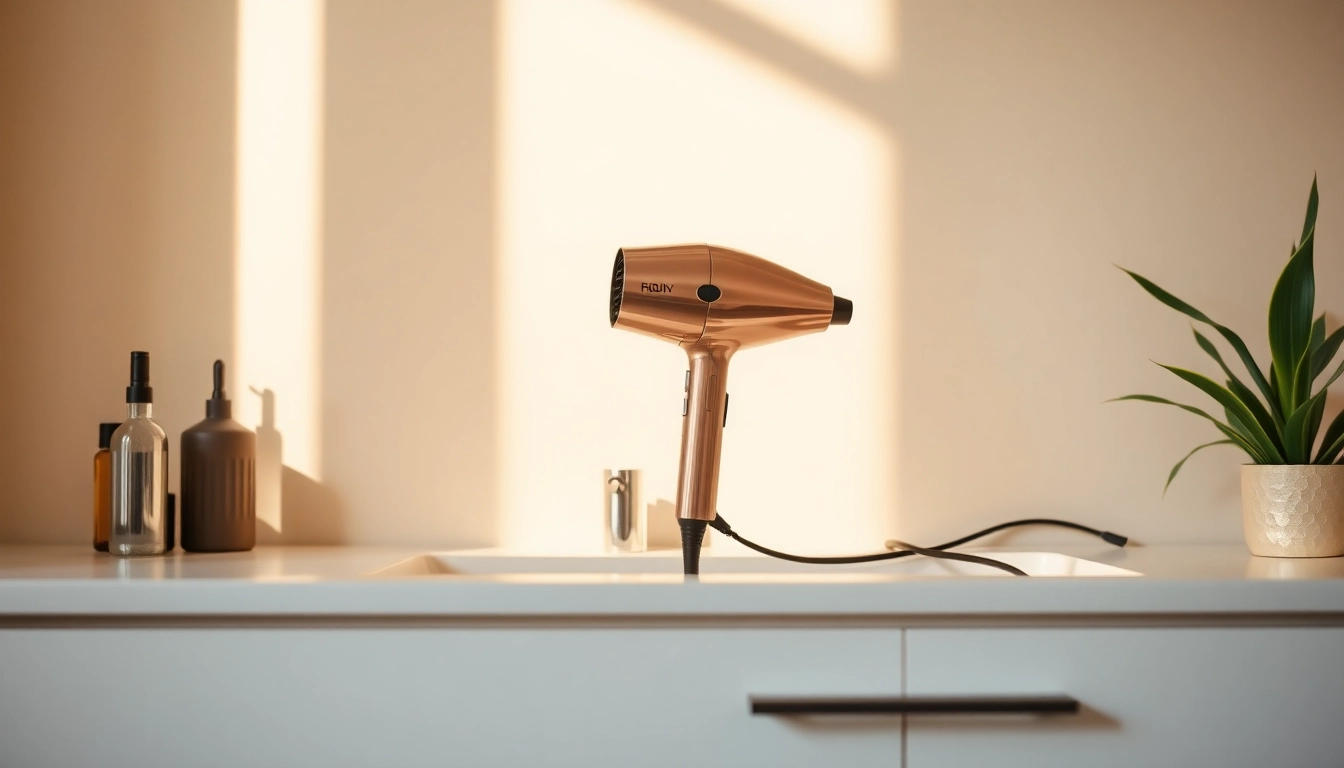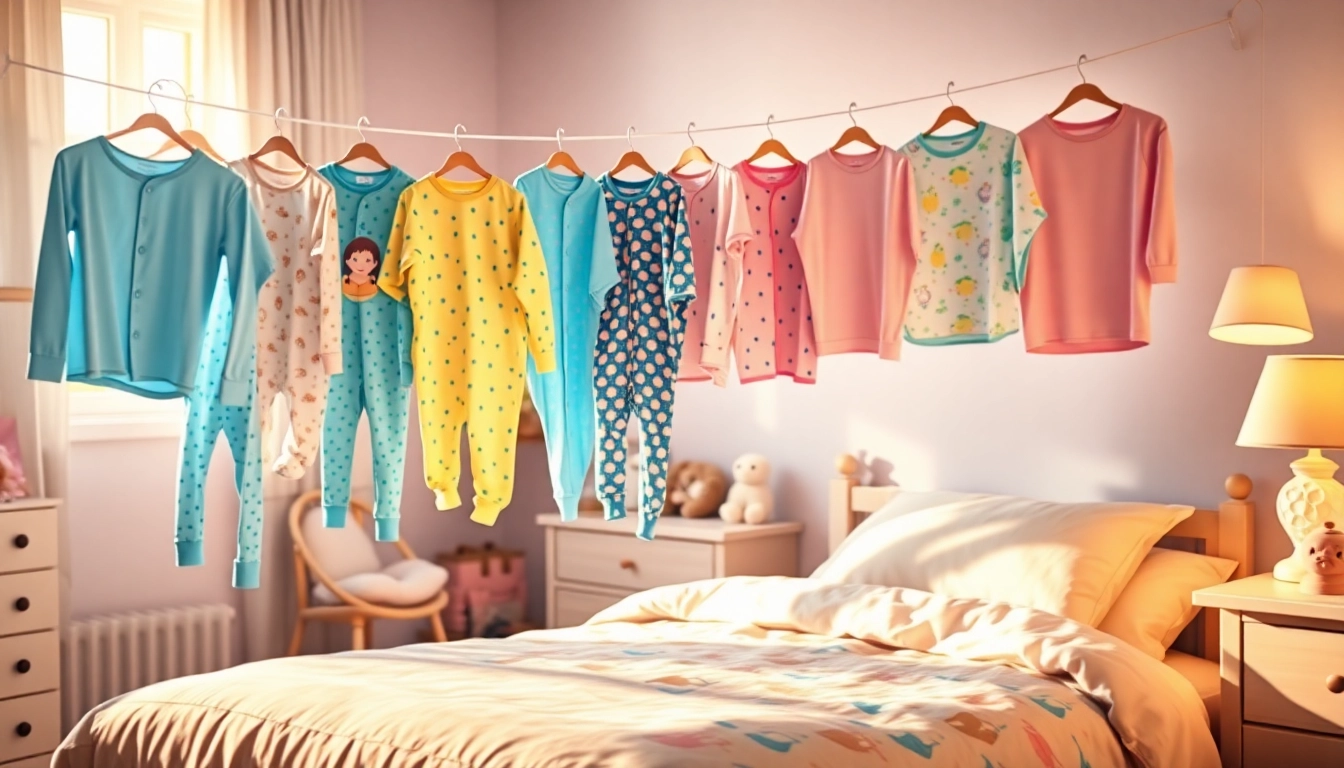Understanding Heat Tools for Hair
In the realm of hair styling, heat tools have become indispensable for achieving a wide array of looks, from sleek and straight to voluminous curls. Whether you are a professional stylist or simply someone who enjoys playing with their hair at home, knowing the ins and outs of heat tools for hair is essential. This comprehensive guide will illuminate the various types of heat tools, their benefits, how to choose the right one for your hair type, safety measures for usage, and advances in technology that are shaping the future of hair styling.
What Are Heat Tools?
Heat tools are any devices designed to apply heat to hair, enabling styling through methods such as straightening, curling, or drying. Some common examples include:
- Flat Irons: Used primarily for straightening hair, they consist of two heated plates that clamp down on sections of hair, smoothing them as they glide from root to tip.
- Curling Irons: These tools create curls or waves and come in various barrel sizes. They work by wrapping a section of hair around a heated barrel, allowing the hair to take shape through the application of heat.
- Hair Dryers: Functioning to remove moisture from wet hair, these devices can also be used to add volume and shape.
- Hot Brushes: A hybrid between a brush and a hot styling tool, they can create smoothness while drying the hair.
Benefits of Using Heat Tools
The primary advantage of heat tools is their ability to achieve desired hairstyles quickly. Here are several specific benefits:
- Versatility: Heat tools can create a variety of styles, from straight to curly, which allows users versatility in their hair looks.
- Time Efficiency: Unlike traditional styling methods, which can be labor-intensive, heat styling can yield results in a matter of minutes.
- Long-lasting Results: Heat-styled hair typically holds its shape for a longer duration, reducing the need for frequent restyling.
- Professional Finish: Using heat tools often results in polished looks similar to what can be achieved in a salon, increasing self-confidence among users.
Common Heat Tools and Their Functions
Let’s break down the most common heat tools and their specific functionalities:
Flat Irons
Often the go-to for straightening hair, flat irons feature heated plates that clamp the hair securely, applying even pressure and heat to eliminate curls or frizz. The size of the plates can vary, with wider plates suitable for thick hair and narrower options ideal for fine or short hair.
Curling Irons and Wands
Curling irons typically feature a clamp for securing hair, while curling wands do not, allowing for a more natural, beachy wave. The heat of these tools enables the hair curl pattern to set effectively.
Hair Dryers
Hair dryers come equipped with various heat settings and attachments like diffusers and concentrators, catering to different hair types and desired styles. They work by blowing hot air on wet hair, evaporating moisture quickly and efficiently.
Hot Brushes
This tool offers a two-in-one experience by combining the smoothing effects of a brush and the heat of a flat iron, making it easier for users to achieve straight or voluminous looks in less time.
Choosing the Right Heat Tool for Your Hair Type
With numerous heat tools available on the market, selecting the right one for your hair type can vastly improve the effectiveness of your styling efforts while minimizing damage. Here are factors to consider when choosing a heat tool.
Tools for Straightening and Curling
When considering straightening tools, flat irons are best; however, consider factors like plate material (ceramic is gentler)—for curling, a tool with adjustable heat settings will cater to various styles and hair types.
Best Heat Settings for Different Hair Types
Choosing the appropriate heat setting is vital in protecting your hair. Below is a guideline:
- Fine or Damaged Hair: 250°F to 300°F (about 120°C to 150°C) is ideal to prevent further damage.
- Normal Hair: 300°F to 350°F (about 150°C to 180°C) tends to work well to achieve curls and straight looks effectively.
- Thick or Coarse Hair: 350°F to 400°F (about 180°C to 200°C) is necessary to effectively manage frizz and create lasting styles.
Popular Brands and Product Recommendations
While there are countless brands, some standout names in the industry include:
- GHD: Known for their reliable and quality heat tools, particularly their flat irons and curling wands.
- Dyson: Offers innovative dryers and stylers focused on protecting hair while styling.
- BaBylissPRO: Popular among professionals for their diverse range of styling options.
- Conair: An affordable option for those starting, with various styling tools suitable for different hair types.
How to Use Heat Tools Safely
Even the best heat tools can cause damage when used improperly. Here are some critical safety measures and techniques to consider while styling your hair.
Preparing Your Hair for Heat Styling
Preparation is crucial for minimizing damage. Ensure hair is clean, and consider a deep-conditioning treatment to add moisture before styling. Allow the hair to air dry partially before using heat, as raw wet hair is more susceptible to damage.
Heat Protectant Importance
Applying a heat protectant spray before using any heat tool forms a barrier that helps shield the hair cuticle from high temperatures. Look for products that contain silicones or oils, as they can effectively protect and add shine.
Best Practices for Minimizing Damage
Here are some best practices to minimize potential hair damage while using heat tools:
- Limit Usage: Try to reserve heat tool use for special occasions rather than daily styling.
- Section Hair: Work in manageable sections rather than applying heat to large clumps.
- Don’t Overlap: Ensure that the hot tools are not repeatedly passed over the same section; this minimizes heat exposure.
Aftercare for Heat-Styled Hair
Taking care of your hair after styling is just as crucial as the styling process itself. Proper aftercare can maintain the integrity and appearance of your locks.
Hydration and Conditioning Techniques
Replenishing moisture after using heat tools is vital. Consider applying a leave-in conditioner or a hydrating oil post-styling. Additionally, regular deep conditioning treatments at least once a week aid in restoring lost moisture and keep hair healthy.
Recommended Products for Heat-Damaged Hair
To address heat damage specifically, consider the following products:
- Olaplex No. 3: Renowned for its bond-building technology, it helps repair hair from the inside out.
- Moroccanoil Treatment: A lightweight oil that hydrates, detangles, and improves shine.
- Redken Extreme Anti-Snap: A leave-in treatment designed to reduce breakage and strengthen hair.
- SheaMoisture Curl Enhancing Smoothie: An excellent choice for moisturizing and enhancing curls without weighing them down.
Maintaining Results: Tips and Tricks
To maintain your heat-styled hair, practice minimal brushing and tie hair up in a loose style when sleeping. Use satin or silk pillowcases, which help reduce friction and prevent frizz.
Latest Innovations in Heat Styling Technology
Innovation continues to drive the development of heat tools, leading to improved safety and performance.
What’s New in Heat Tools for Hair?
Among the recent advancements include:
- Smart Heat Control: Tools that automatically adjust temperature based on hair type and moisture levels to maximize styling and minimize damage.
- Steam Technology: Flat irons that incorporate steam to help hydrate while styling, effectively reducing heat damage.
- Infrared Heating: This technology heats from within, preventing outer damage and promoting smoother finishes.
Consumer Trends and Preferences
Recent trends indicate a growing preference for products best designed to preserve hair health. Consumers are gravitating toward tools advertised as gentle yet effective and prefer multifunctional tools to reduce clutter in their styling routines.
Future of Heat Styling: Insights and Predictions
Experts predict the future will see more eco-friendly materials and energy-efficient designs in heat tools. As technology evolves, we can anticipate a shift toward even more personalized styling experiences, possibly using app technology for precise heat settings tailored to individual hair needs.


